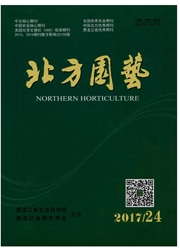

 中文摘要:
中文摘要:
以苦苣为试材,采用营养液栽培法,研究了不同供氮水平对苦苣生长、根系活力、叶片叶绿素相对含量(SPAD值)、光合气体交换参数、H2O2和丙二醛(MDA)含量以及活性氧清除能力的影响。结果表明:在5个不同供氮处理水平中,8mmol·L-1(N8)的施氮水平下苦苣植株生长最佳,这与植株具有较高水平的根系活力、SPAD值、净光合速率(Pn)和较高的活性氧清除能力、较低的膜脂过氧化程度有关。而低氮(2、5mmol·L-1)或高氮供应水平(11、14mmol·L-1)因不同程度降低苦苣植株根系活力、叶片光合色素含量和活性氧清除能力,导致H2O2过量积累、膜脂过氧化加剧,细胞膜的结构及功能受损伤,从而抑制苦苣植株的光合作用和生长。
 英文摘要:
英文摘要:
With Cichorium endivia L.as test material,hydroponic experiments were conducted to investigate the effects of different nitrogen levels on plant growth and root activity,as well as chlorophyll relative content(SPAD value),photosynthetic gas exchange parameters,the contents of H2O2 and malondialdehyde(MDA)and active oxygen scavenging capacity in leaves of endive.The results showed that,the growth of endive plants under 8mmol·L-1(N8)nitrogen level treatment was the best among of five different nitrogen treatments,which was related to the higher root activity,SPAD value,net photosynthetic rate(Pn)and reactive oxygen species scavenging capability,as well as lower membrane lipid peroxidation in endive plants.Furthermore,the application of low nitrogen(2 mmol·L-1,5 mmol·L-1)or high nitrogen level(11mmol·L-1,14mmol·L-1)decreased Pn and inhibited the growth of endive plants in different degree likely due to the decrease in root activity and leaf photosynthetic pigment content and the damage in structure and function of cell membrane caused by the decrease of active oxygen scavenging capacity,which resulted in the accumulation of H2O2 and membrane lipid peroxidation enhancement.
 同期刊论文项目
同期刊论文项目
 同项目期刊论文
同项目期刊论文
 期刊信息
期刊信息
